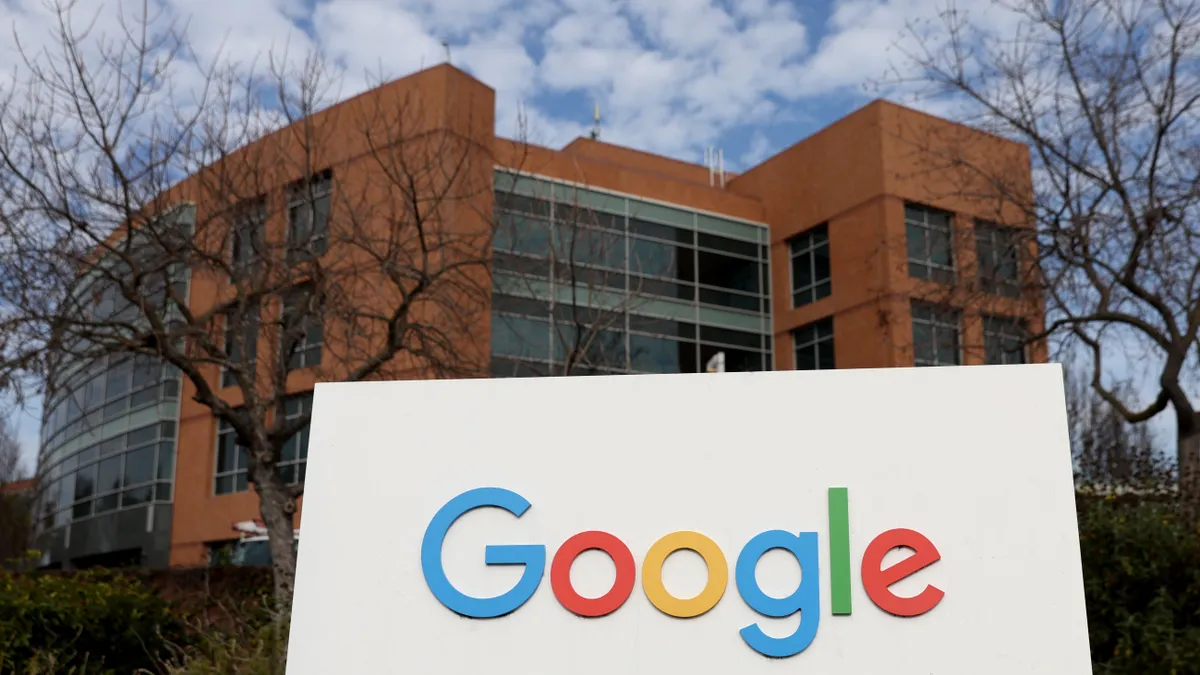Dive Brief:
- Google parent Alphabet grew revenue 11% year-over-year in the Q3 period ended Sept. 30 for a total of $76.69 billion, above analyst estimates, according to an earnings statement.
- The tech giant’s core search business and YouTube were bright spots. Search and Other, its largest segment, was up 11% YoY to $44.02 billion while YouTube climbed 12% YoY to $7.95 billion, supported by spending on both brand-building and direct response campaigns.
- Meanwhile, revenue from Google’s advertising network that helps brands place ads around the web declined 3% YoY to $7.67 billion. The positive results give the company momentum heading into the key holiday period and suggest Google has effectively brushed off a series of recent controversies related to its ads business.
Dive Insight:
Google’s strong Q3 showing, at least regarding search and YouTube, sends another signal that the digital ad market is in recovery mode following a period of pullbacks. Revenue derived from the company’s cloud business missed analyst expectations, which sent shares lower on Tuesday, according to CNBC.
Still, the search giant had plenty to boast about when discussing the earnings. YouTube this fall began broadcasting NFL Sunday Ticket, a bid to shore up its connected TV (CTV) bets as more live sports make the jump to streaming. While it’s too early to tell the full impact of securing the pro football package, executives indicated response so far has been positive, including for a multi-view feature that allows fans to watch several games at once. About 150 million viewers tune into YouTube via CTV screens per month in the U.S.
YouTube also saw a healthy amount of activity regarding both brand-building and performance media in Q3, demonstrating that ad spending is stabilizing and marketers continue to test out newer features like the TikTok lookalike Shorts. Those gains come despite several controversies that have roiled Google in recent months. Two reports from researcher Adalytics alleged that the firm failed to live up to its standards around video ad placements on third-party sites and safeguarding children’s privacy on YouTube, respectively. The findings, which Google has denied, generated media attention but clearly did not ward off brands.
If anything, marketers may be more reliant on digital channels as they try to make the most of a holiday shopping window where many consumers will be watching their wallets closely due to inflation. The amount of search queries related to seasonal deals is up four times compared to other periods, according to Google Chief Business Officer Philipp Schindler, and 75% of Google users stated they were interested in purchasing from retailers that offer free shipping.
“Consumer expectations are shifting, especially around price and convenience,” said Schindler on a call with analysts. “We’re making improvements to significantly boost the number of deals shown to shoppers in search this holiday season.”
Generative artificial intelligence (AI) also continues to be a focus, with Google touting the potential of a new Search Generative Experience (SGE) that mirrors rival software like ChatGPT. Google’s challenge now is to balance the high costs of developing generative AI with monetization. Speaking with analysts about the Q3 results, Google CEO Sundar Pichai affirmed that “ads will continue to play an important role” in SGE, and that the platform is experimenting with more native formats.
Other AI-powered ad tools, such as Performance Max campaigns, have taken high priority for Google. Part of the pitch around Performance Max is around improving efficiency through automation, but Google is also hoping the solution can help marketers wean off third-party cookies, which the company will begin deprecating in the first quarter of 2024 for a small portion of Chrome users. Schindler said that Chrome has made “significant progress” in building out its Privacy Sandbox initiative that seeks to provide cookie alternatives.















